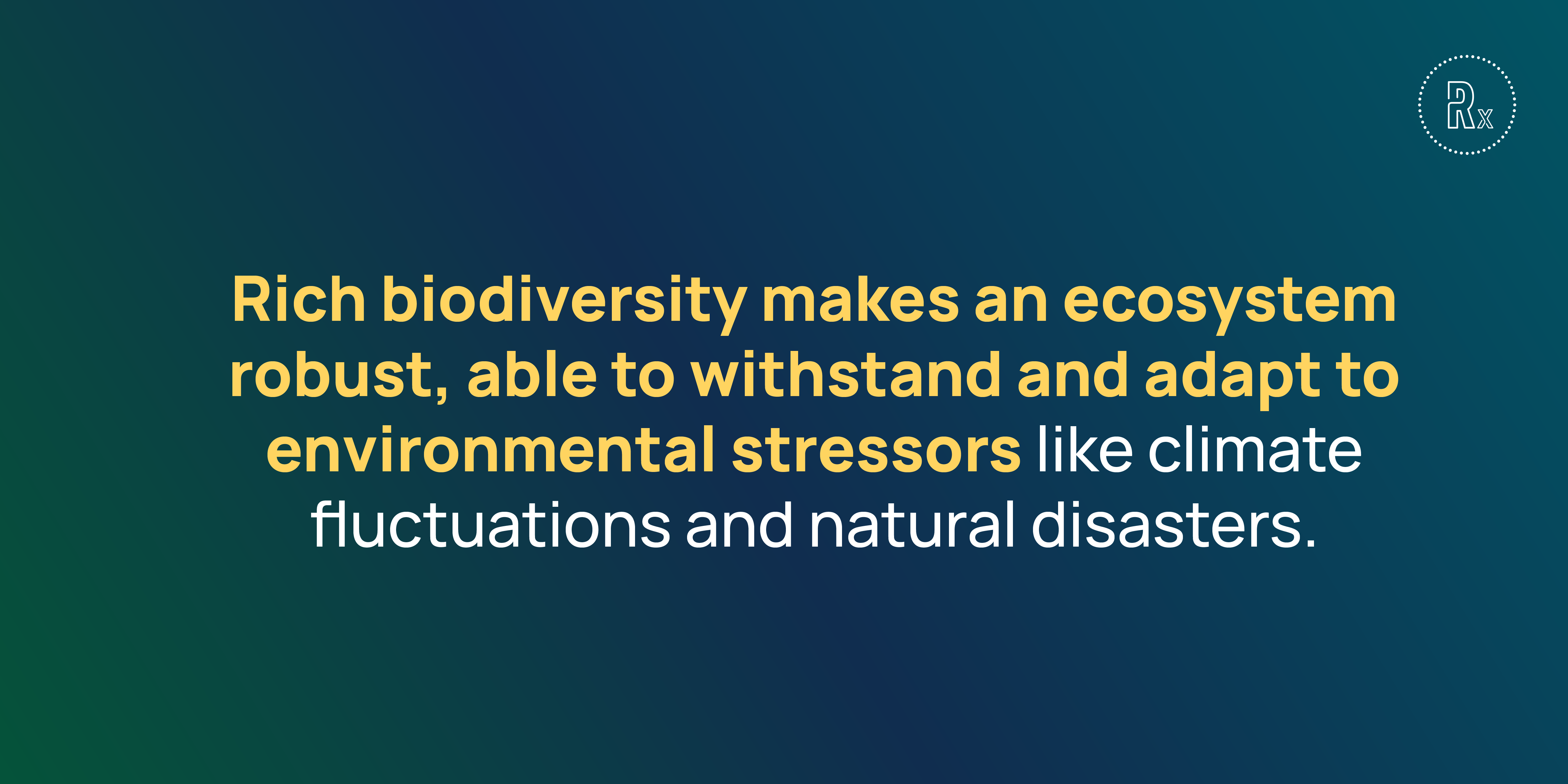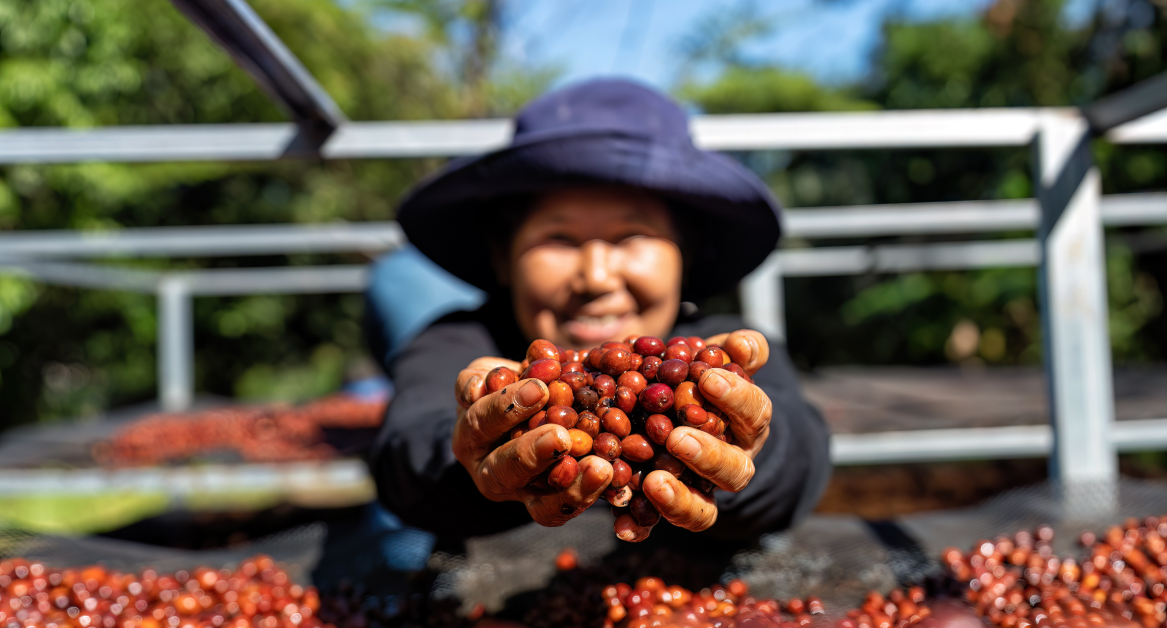Biodiversity is the variety of all forms of life on Earth. It’s more than just nature’s beauty; it’s what makes ecosystems work well, linking everything from the ground to the air. But with more people and growing needs for resources, this balance is at risk.
This balance state matters because it’s the base that holds up all life, including humans. So, let’s take a look at the core of biodiversity, what threatening it, and the efforts we are making to protect biodiversity.
Biodiversity – an overview
Our planet is like a clock, each gear representing a different species. This is the essence of biodiversity – the variety of life in all its forms, interactions, and complexities. From the tiniest bacteria enriching our soils to the largest whales, each life form contributes to the function of natural ecosystems.
This biological diversity is not merely a collection of plants and animals; it is the result of billions of years of evolution, shaped by natural processes and, increasingly, by human influence.
Yet today, this incredible variety of life faces unprecedented challenges. The biodiversity crisis refers to the accelerating loss of biodiversity across the globe. As species vanish at rates much higher than natural extinction, we risk losing vital elements of our natural world. The loss of biodiversity can lead to a decrease in ecosystem resilience, impacting everything from food production to the stability of climates.
But what does this intricate web of life mean for the world around us, and why should its preservation be a priority?
Biodiversity’s role in ecosystem stability and resilience
Biodiversity serves as the foundation of ecosystem stability and resilience. The vast array of plants and animals within natural ecosystems interact in a complex balance, each playing a specific role that supports the others.
Pollinators, for instance, are critical for the reproduction of a wide array of plants, including many crops crucial for human consumption.
This intricate interdependence allows ecosystems to weather changes and disturbances. Rich biodiversity makes an ecosystem robust, able to withstand and adapt to environmental stressors like climate fluctuations and natural disasters.

For example: A diverse forest has a greater chance of surviving a pest outbreak than a single-species plantation because its varied species provide a natural barrier to the spread of disease and pests.
Biodiversity’s influence stretches beyond ecosystem health, impacting air and water quality, soil fertility, and even disease regulation. Wetlands, brimming with life, illustrate this well; they filter pollutants and provide a natural defense against flooding.
The loss of a single species can send shockwaves through an ecosystem, diminishing its ability to function and rebound from disasters. This loss, often a result of human actions, threatens not just wildlife but the very systems upon which human societies depend.
Biodiversity as a cultural and aesthetic keystone
Biodiversity is the beauty and complexity of life, offering more than just ecological benefits—it enriches our culture and provides a wellspring for our aesthetic appreciation. Each species and habitat is a part of our planet’s biological diversity. They inspire artists, writers, and philosophers through the ages.
Culturally, biodiversity is woven into the fabric of human societies. It is celebrated through art, music, and literature, each expressing the natural world’s wonder.

Source: wikipedia.org
This relationship between nature and culture is interdependent; as biodiversity has shaped human cultures, so have these cultures developed ways to understand and celebrate the natural world.
The early communities, for example, have long revered the natural ecosystems they inhabit, recognizing the value of every plant and animal within their traditions and customs.
Biodiversity’s aesthetic value is universal, cutting across languages and borders, and is a source of joy and inspiration for people around the globe.
Yet, as we appreciate the cultural and aesthetic significance of biodiversity, we must also acknowledge the threats it faces. The loss of biodiversity not only diminishes the ecological resilience of natural habitats but also erodes the cultural and aesthetic fabric that enriches our lives
What happens, though, when this canvas begins to fray? Let’s examine the threats that put this diversity at risk.
Threats to biodiversity and resulting ecosystem impacts
Some factors increasingly threaten the delicate balance of biodiversity.
Habitat destruction
The expansion of human activities carves into the natural habitats that many species call home. The loss of these environments is like pulling threads from an ecological tapestry, weakening the whole system. As forests are cleared and wetlands drained, the places where wildlife can live and thrive shrink, leading to a decline in both individual species and overall biodiversity.
Climate change
Our planet’s changing climate is shifting the boundaries of what’s possible for many species, demanding rapid adaptation or facing potential extinction. Climate change affects migration patterns, breeding seasons, and food availability, disrupting the age-old rhythms of the natural world.
Pollution
Pollutants from various sources harm the ecosystems, causing severe damage. From the chemicals tainting our waters to the plastics in our oceans, these contaminants are not only direct threats to wildlife but also degrade the quality of the natural resources we depend on.
Invasive species
When non-native species are introduced into ecosystems, they can become invasive, spreading rapidly and often outcompeting native species. This can lead to a decline in local biodiversity and the disruption of established ecological processes.
Overexploitation
The insatiable demand for natural resources has led to overfishing, overhunting, and overharvesting. This unsustainable exploitation is depleting wildlife at a rate that outpaces their natural ability to recover, pushing many species toward extinction and reducing biodiversity.
The interplay of these threats not only endangers the myriad species that make up the planet’s biological diversity but also weakens the ecosystems that are vital to human survival. The loss of biodiversity means losing the natural systems that purify our air and water, pollinate our crops, and regulate our climate.
Biodiversity conservation: Efforts and challenges
The conservation of biodiversity requires a collaborative approach, bringing together governments, conservation organizations, communities, and individuals toward a common goal: to protect and sustain the biological diversity.
Protected areas: Safe havens for diverse life forms
The establishment of protected areas, including national parks and wildlife reserves, is a cornerstone of biodiversity conservation efforts. These areas provide refuge for millions of species, offering them a sanctuary from the encroachments of human development and exploitation. They are critical not only for preserving habitats but also for maintaining healthy ecosystems that support a diversity of life.
Legal frameworks and policies
Legal protections, such as the Endangered Species Act in the United States, enforce measures to protect vulnerable species from extinction. International agreements like the Convention on Biological Diversity lay down a global framework for biodiversity conservation, setting targets and mobilizing resources for conservation efforts worldwide.
Community engagement
Local communities often play a pivotal role in conservation, especially those who live in or near biodiverse regions. Indigenous peoples, in particular, have been custodians of biodiversity for centuries, with traditional knowledge and practices that are invaluable for sustainable management. Engaging these communities and incorporating their knowledge into conservation strategies is essential for effective biodiversity protection.
Scientific research and monitoring
Scientific research contributes to our understanding of biodiversity and the impacts of human activity on ecosystems. Monitoring biodiversity helps identify declining populations and habitats at risk, guiding conservation actions where they are needed most.
For example, technologies like satellite imaging and bioacoustic monitoring are advancing the ways we can observe and understand the natural world. Additionally, sustainable agriculture practices are being tested and executed to replace the traditional soil-degradation agriculture method.
To learn more about how the top minds of the world are conducting this new farming technique, feel free to check out RegenX’s blog on Exploring Sustainable Agriculture Examples Around the Globe.
Restoration and rehabilitation
In areas where damage has been done, restoration projects aim to rehabilitate ecosystems. Reforestation, wetland restoration, and the reintroduction of native species are examples of efforts to restore ecological balance and enhance biodiversity.
Funding and resource allocation
Conservation efforts require substantial funding and resources, which are often in short supply. Allocating adequate funds to protect biodiversity is a persistent challenge, with competition from other societal needs and interests.
RegenX opens a promising option for eco-investors across the world to funding for an emerging sustainable practice – Regenerative agriculture. We are a financing and orchestration platform that facilitates regenerative agricultural practices at scale. RegenX aims to transition farmers from monoculture farming to regenerative agriculture to improve their livelihoods, environmental sustainability, and resilience to climate change.
Change your actions, not the climate
The challenges to preserving this treasure are significant, yet not impossible. Each of us holds the power to contribute to the preservation and restoration of biodiversity. Whether it’s through supporting responsible brands, advocating for protective legislation, or educating others about the importance of biological diversity, our individual actions can echo across communities and influence global change.
By choosing to support practices like regenerative agriculture, which nurtures the soil and enhances biodiversity, we can help to reverse the trend of environmental degradation.



